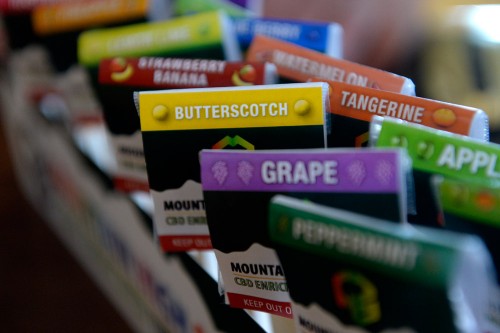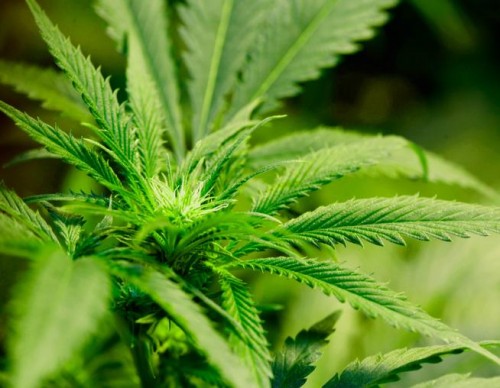In the places where marijuana is legal, more and more children are being accidentally exposed to their parents’ drugs, a new study found.
The good news is that it is still rare for children to be exposed to marijuana when they are younger than 6 — but the trend is not exactly heading in the right direction.
Marijuana is legal now in more places than ever, and as a result, the number of reports that children have accidentally ingested or inhaled the drug is increasing.

The new study, published in the journal Clinical Pediatrics, analyzed figures from the National Poison Data System, which is the clearinghouse for data from all of the poison control centers in the United States. The data in the study covered 2000 to 2013.
The incidents were self-reported, and the data set is probably subject to a certain amount of human error and underreporting. But it gives a pretty comprehensive picture of the trends across the entire United States.
Between 2000 and 2006, there was no significant change in the number of children who were reported to have been exposed to marijuana. By the end of that period, medical marijuana was legal in 11 states.
But between 2006 and 2013, the rate of exposure increased by 147.5 percent. Even in states where medical marijuana use isn’t legal, the study found that exposure rates increased, though not as much as in states where it was legal.
More on edibles
Special report: 15 months in, edibles safety still concern for Colorado
Dazed & Infused: Five legit reasons why an edible’s high is unpredictable
Yes, they did: They smoked salmon (with weed) at Rosenberg’s Bagels in Denver
Weed etiquette: Emily Post’s great-granddaughter on marijuana manners
Weed K-Cups: Pot-infused Keurig-style coffee pods are now on shelves
Watch The Cannabist Show. Follow The Cannabist on Twitter and Facebook
Chelsea Handler: ‘I took edibles to Mexico…’ And the story gets better
Ask The Cannabist: Smoking vs. eating pot — why is the high so different?
So says TMZ: Rosie O’Donnell’s ex says the star loves her wine, weed and edibles
They’re everywhere: Appetite for edibles in Colorado big surprise for recreational market
In places such as Colorado, which has legalized both medical and recreational marijuana, this is a persistent problem for legalization advocates. Everyone agrees that drugs — like alcohol — should be kept away from kids, but it is unclear how to make edibles less likely to fall into the wrong hands.
Accidental ingestions, which account for a whopping 75 percent of cases, are much more likely with the growing availability of marijuana edibles. Most of these kids are probably ingesting marijuana accidentally — on account of their natural curiosity and the fact that the products themselves can taste like treats, researchers said. A majority of the children exposed to marijuana were 3 years old or younger, according to the study.
“The high percentage of ingestions may be related to the popularity of marijuana brownies, cookies and other foods,” study co-author Henry Spiller said in a statement.
Spiller, a toxicologist and director of the Central Ohio Poison Center at Nationwide Children’s Hospital, added: “Very young children explore their environments by putting items in their mouths, and foods such as brownies and cookies are attractive.”
Again, these numbers are relatively small compared to a host of other things that pose a danger to young children, such as pain medications, which are more likely to be in just about every household.
There are a couple of takeaways for lawmakers considering legalization laws. Child-resistant and opaque packaging should be the basic standards for edibles, researchers suggest. In many places, they already are.
But parents also need to be intensely educated about the risks to their children, particularly when marijuana legalization is first implemented, and then again after the initial education push has worn off and the marijuana market is more established.
The data showed that cases of accidental ingestion spiked in the year marijuana was legalized, researchers said. But they increased again several years down the road.

“Any state considering marijuana legalization needs to include child protections in its laws from the very beginning,” added Gary Smith, a senior author of the study and director of the Center for Injury Research and Policy at Nationwide Children’s Hospital. “Child safety must be part of the discussion when a state is considering legalization of marijuana.”
Most of the children who were exposed weren’t hospitalized, and the symptoms they experienced were relatively minor, researchers said.
But, they added, that shouldn’t be assumed to mean that the risk is minimal. Marijuana edibles tend to have higher-than-expected levels of tetrahydrocannabinol, or THC, the main psychoactive ingredient in marijuana, and exactly how much can vary widely from product to product. Some of the more severe consequences of accidental ingestion include seizures, coma and respiratory issues.
In a recent editorial in the New England Journal of Medicine about the marketing of marijuana edibles to children, two Stanford University professors, Robert J. MacCoun and Michelle M. Mello, explained why edibles pose such a serious potential problem when it comes to the safety of children. “Whereas consumers commonly assume that a candy bar constitutes a single serving, some of these products contain four or more times the level of tetrahydrocannabinol (THC) that is considered to be a safe dose,” they wrote. “(Colorado, for instance, set a standard size for an edible serving at no more than 10 mg of THC.) At high doses, THC can produce serious anxiety attacks and psychotic-like symptoms. This problem is augmented by differences in the pharmacokinetic and metabolic effects of marijuana when it is ingested rather than smoked.”
That’s why enforcement actions have targeted products that could be attractive to children, with packaging and names that are deceptively similar to popular junk-food and candy products. From “Pot Tarts” to “Keef Kat,” these products are being pulled off the shelves nearly as quickly as they are being put on. But that should signal the need for a more proactive strategy, critics say.
One concern beyond increasing the likelihood of accidental ingestion is that edibles might also encourage children to adopt marijuana habits at a younger age.
“Every drug policy analyst expected that marijuana brownies would be a feature of the legalized U.S. marijuana market, but the speed at which the industry developed near carbon copy branding of child-friendly marijuana edibles caught many people by surprise,” wrote Keith Humphreys, a professor of psychiatry and the director of mental health policy at Stanford.
When states legalize marijuana, they also make it possible to regulate the marketplace for edibles and better educate parents about the risks. Fine-tuning those details may take some time, Humphreys noted.
“The good news, though, is that the half-dozen or so states that are likely to legalize in the next few years can learn from others’ experience and bake in regulations to their legalization proposals that constrain this type of edible,” he said.
